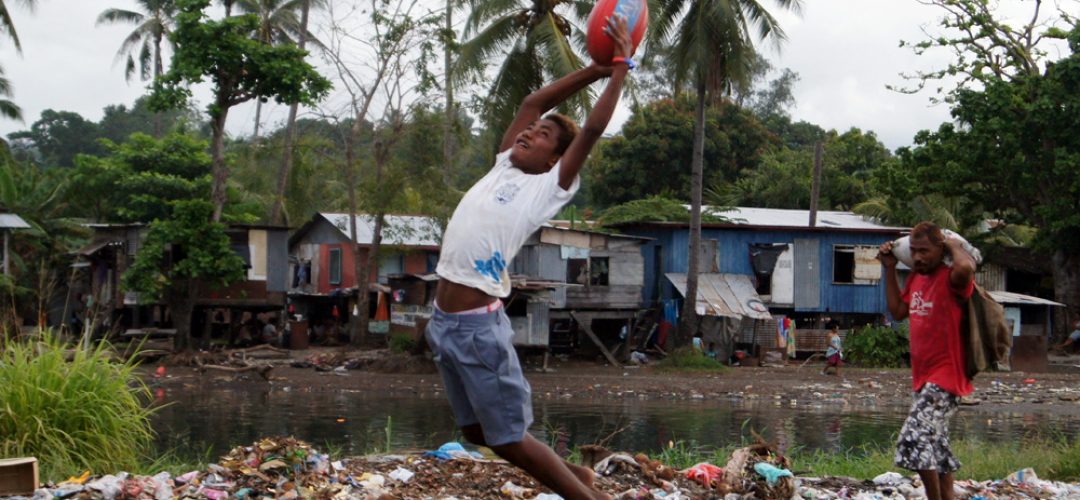Land Tenure Struggles in Honiara

By Charles Kadamana
The urban State land in Solomon Islands is under a great deal of pressure not because of increasing informal settlers but because of its Land Tenure System.
In Solomon Islands about 83 percent of the lands are customary owned. Customary owned lands owned by tribal groups, clans and families. Only 17 percent of the lands are state owned lands.

Joseph Foukona, USP Law Lecturer (Emalus Campus)
Joseph Foukona a Law Lecturer at USP in Emalus Campus who carried out a case study on Urban Land Tenure in Solomon Islands said access to urban land for development remains a challenge.
“Customary and cultural institutions in the Solomon Islands deals with the management and administration of lands however are pressured with increase urbanization.
“But urban planning law does not apply to customary land,” he said.
He said acquiring land around Honiara is difficult because of the complexity of customary tenure and strong cultural ties to land.
In his recent report published in The Journal of Pacific History (2015) he highlighted that the rapid increase in rural-to-urban migration and population growth, land in Honiara has become a limited resource.
As the result many business people, middle class income earners from other provinces like Malaita, Isabel, and Western including Guadalcanal landowners continue to struggle to access and acquire urban land.
One of the effects of urbanization to the land tenure system is the increase of informal settlements in Honiara.
According to Solomon Islands National Urbanization Profile report 2012 it states that informal settlers have continued to grow illegally over the years and have resulted in the increase of sub-standard housing. This issue can be associated to the lack of land tenure security.
Mr Foukona said that accessed to urban land is one of the main causes of increase informal settlement.
He said other factors are the unregulated land markets which have hiked the land prices making it unaffordable to many low paid earners. Moreover corruption within the land administration has also hampered equals access to urban lands.
A public servant and PhD candidate (Diplomacy and International Affairs) at USP, George Hou’au, added that the main challenge of urbanization is directly linked to different status of land ownership such as customary, private owned and government owned land.
“A major one is the challenges seen from the view of those who owns the different status of land.
“Government sees it differently for example the title of land. This is illegal,” he said.
However Mr Hou said from the Guadalcanal perspective it is this TOL status that allows other to come in and now extending into customary land.
He said urbanization is not a problem but what has happened in Honiara is a sign of failed leadership and urban planning in Honiara.
“For example the City Land plan offices, City Transport Committee, Honiara City building committee, Town Country Planning division although they exist they haven’t been effective,” he said.
He said to address these urban challenges the Solomon Islands government need to buy land from customary land owning group to extend the town boundary. Moreover to decentralize the town and formalized the status of land by leasing the land.
According to the Ministry of Land, Housing and Survey report 2015 the Rural-urban migration has placed enormous pressure for land in around Honiara.
The 2009 census estimated that then 11,500 households would come to a total of roughly 51,000 in 2015 and that Guadalcanal would surpass Honiara in 2050.
Measures have been taken by Task Force officers from the Ministry of Land, Housing and Survey and the Registrar of Titles to investigate and identify additional land to cater for the urban expansion around Honiara.
In their investigation the Task Force divided Honiara into six areas.
The areas are Kakabona and White River, Tasahe, Titinge, East Honiara and Mount Austin, Panatina Valley and Betikama and Henderson and Bloody Ridge.
The Task Force recommended that the government purchase Perpetual Estates, enter into partnership with landowners to develop their land or sell it to the government for public ownership, subdivide land for infrastructures and grant Fixed Term Estates to interested developer through public tender process.











No Comments
No comments yet. You should be kind and add one!